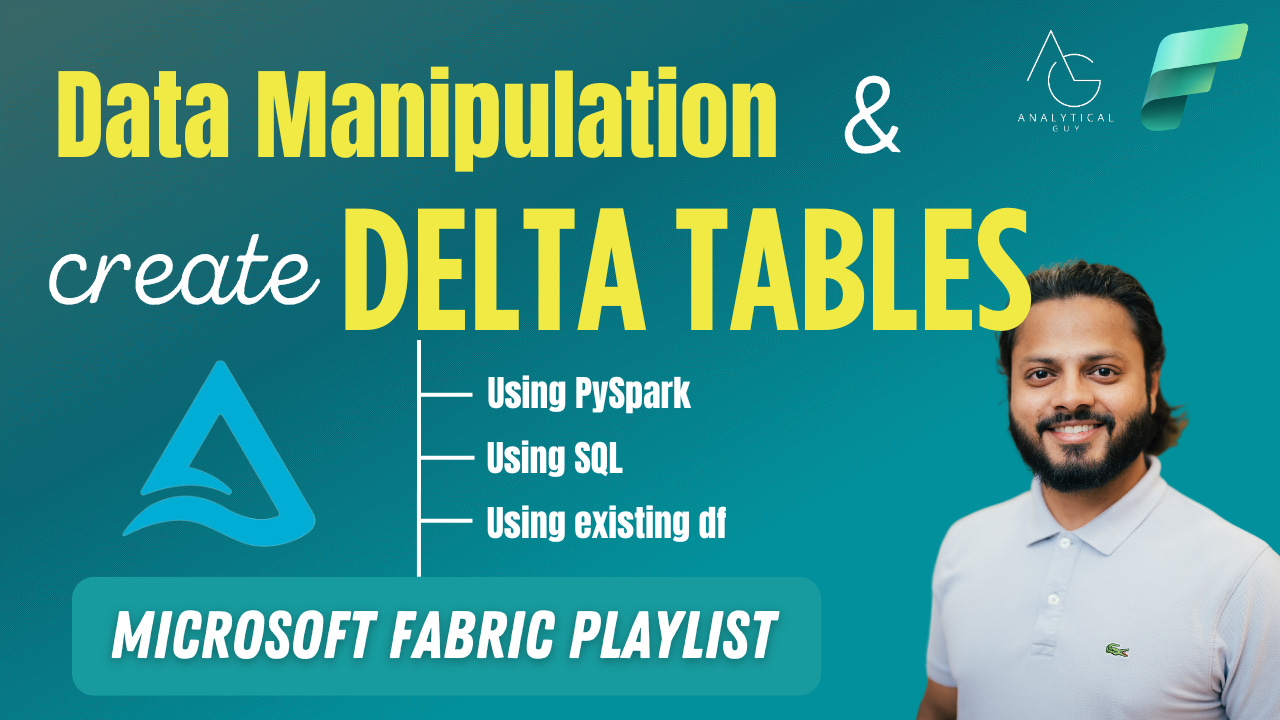Data Warehouse vs Data Lake vs Delta Lake: What’s the Difference?
Practical Guide to create DELTA Tables in Microsoft Fabric
🙋♂️Hi there. I am Atikant Jain (AJ). Welcome to my newsletter, where I talk about career in Analytics & Data Science. Currently spreading love about Microsoft Power BI & Microsoft Fabric.
As data grows in size and complexity, selecting the right data storage solution has become crucial. Here’s a quick breakdown of Data Warehouses, Data Lakes, and Delta Lakes—and why Delta Lake offers a modern solution.
1️⃣ 𝗗𝗮𝘁𝗮 𝗪𝗮𝗿𝗲𝗵𝗼𝘂𝘀𝗲: 𝘚𝘵𝘳𝘶𝘤𝘵𝘶𝘳𝘦𝘥, 𝘙𝘦𝘭𝘪𝘢𝘣𝘭𝘦, 𝘢𝘯𝘥 𝘈𝘯𝘢𝘭𝘺𝘵𝘪𝘤𝘴-𝘍𝘰𝘤𝘶𝘴𝘦𝘥
𝑩𝒆𝒔𝒕 𝒇𝒐𝒓: Historical and transactional data that needs to be highly structured.
𝑼𝒔𝒆 𝑪𝒂𝒔𝒆: Ideal for BI (Business Intelligence) and reporting; optimized for fast SQL queries.
𝑳𝒊𝒎𝒊𝒕𝒂𝒕𝒊𝒐𝒏𝒔: Not built for large-scale unstructured or semi-structured data.
2️⃣ 𝗗𝗮𝘁𝗮 𝗟𝗮𝗸𝗲: 𝘍𝘭𝘦𝘹𝘪𝘣𝘭𝘦, 𝘓𝘢𝘳𝘨𝘦-𝘚𝘤𝘢𝘭𝘦 𝘚𝘵𝘰𝘳𝘢𝘨𝘦 𝘧𝘰𝘳 𝘈𝘭𝘭 𝘋𝘢𝘵𝘢 𝘛𝘺𝘱𝘦𝘴
𝑩𝒆𝒔𝒕 𝒇𝒐𝒓: Storing large volumes of structured, semi-structured, and unstructured data.
𝑼𝒔𝒆 𝑪𝒂𝒔𝒆: Ideal for raw data storage and later transformation. Great for machine learning.
𝑳𝒊𝒎𝒊𝒕𝒂𝒕𝒊𝒐𝒏𝒔: Data reliability can be an issue, as traditional data lakes lack structure, which can lead to “data swamp” problems without proper management.
3️⃣ 𝗗𝗲𝗹𝘁𝗮 𝗟𝗮𝗸𝗲: 𝘛𝘩𝘦 𝘉𝘦𝘴𝘵 𝘰𝘧 𝘉𝘰𝘵𝘩 𝘞𝘰𝘳𝘭𝘥𝘴
𝙒𝒉𝙮 𝙞𝒕’𝒔 𝒃𝙚𝒕𝙩𝒆𝙧: Delta Lake combines the storage capabilities of a Data Lake with the data integrity and reliability features of a Data Warehouse.
𝑭𝙚𝒂𝙩𝒖𝙧𝒆𝙨: It provides ACID transactions, schema enforcement, and time travel for historical data.
𝑩𝙚𝒔𝙩 𝙛𝒐𝙧: Scalable, reliable, and high-performance analytics, especially when working with both batch and streaming data.
𝙒𝙝𝙮 𝘿𝙚𝙡𝙩𝙖 𝙇𝙖𝙠𝙚 𝙀𝙭𝙘𝙚𝙡𝙨: 𝙏𝙝𝙚 𝙋𝙤𝙬𝙚𝙧 𝙤𝙛 𝙋𝙖𝙧𝙦𝙪𝙚𝙩 𝙁𝙤𝙧𝙢𝙖𝙩
Delta Lake uses the Parquet format for data storage, which brings multiple advantages:
▶ 𝐂𝐨𝐥𝐮𝐦𝐧𝐚𝐫 𝐒𝐭𝐨𝐫𝐚𝐠𝐞: Parquet organizes data by columns, which is ideal for analytics queries, allowing faster access to needed data.
▶ 𝐂𝐨𝐦𝐩𝐫𝐞𝐬𝐬𝐢𝐨𝐧: With high data compression, Parquet reduces storage costs and optimizes performance.
▶ 𝐈𝐧𝐭𝐞𝐫𝐨𝐩𝐞𝐫𝐚𝐛𝐢𝐥𝐢𝐭𝐲: Parquet is compatible with most big data tools, making it easier to integrate into diverse tech stacks.
Delta Lake’s structure, combined with Parquet’s efficiency, enables both fast querying and cost savingsRecently I have created a Video on explaining this concept with case study in Microsoft Fabric. If you would like to learn more, you can watch it here:
Microsoft Fabric is getting a lot of traction lately. In my opinion, it is one of the best times to study about Fabric and take advantage. There will a lot of jobs for Data Analysts where employer will expect you to know Microsoft Fabric.
You can watch the YouTube Playlist as well to stay updated.
Talk to you soon, and don’t forget to learn something every day!
Please write to admin@analyticalguy.tech if there’s anything you would like to share with us.




